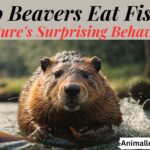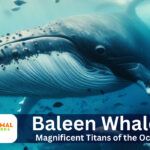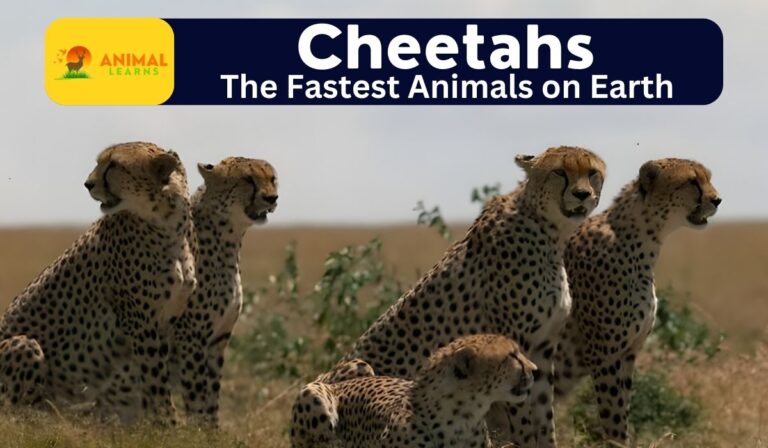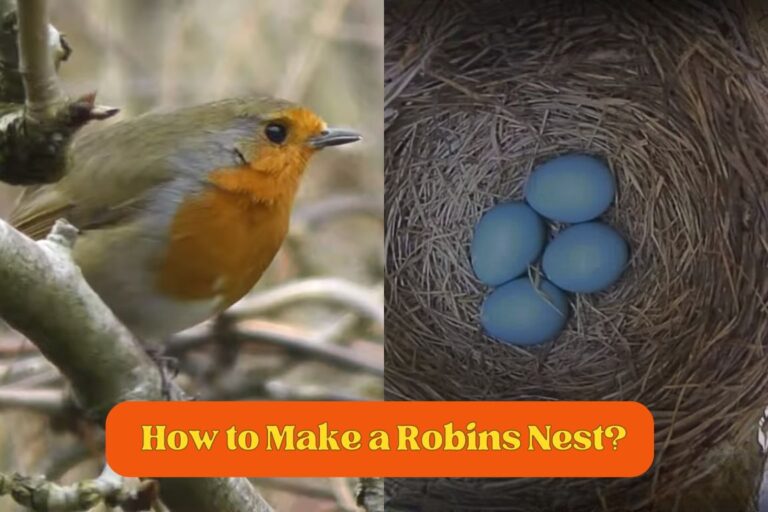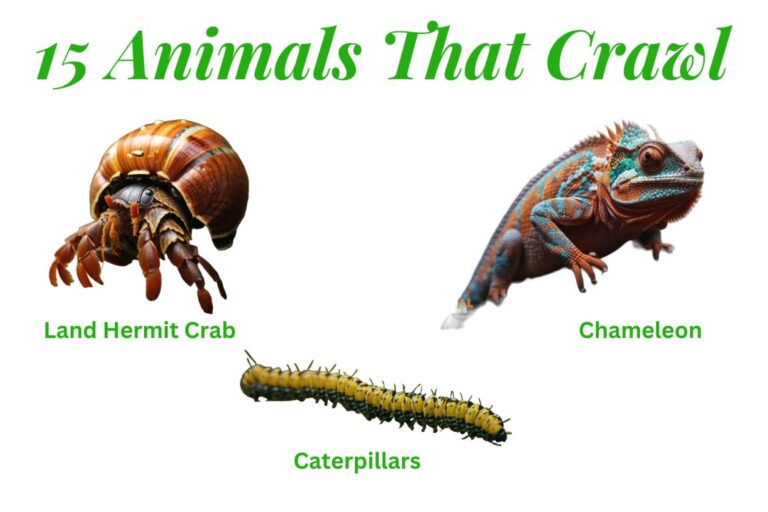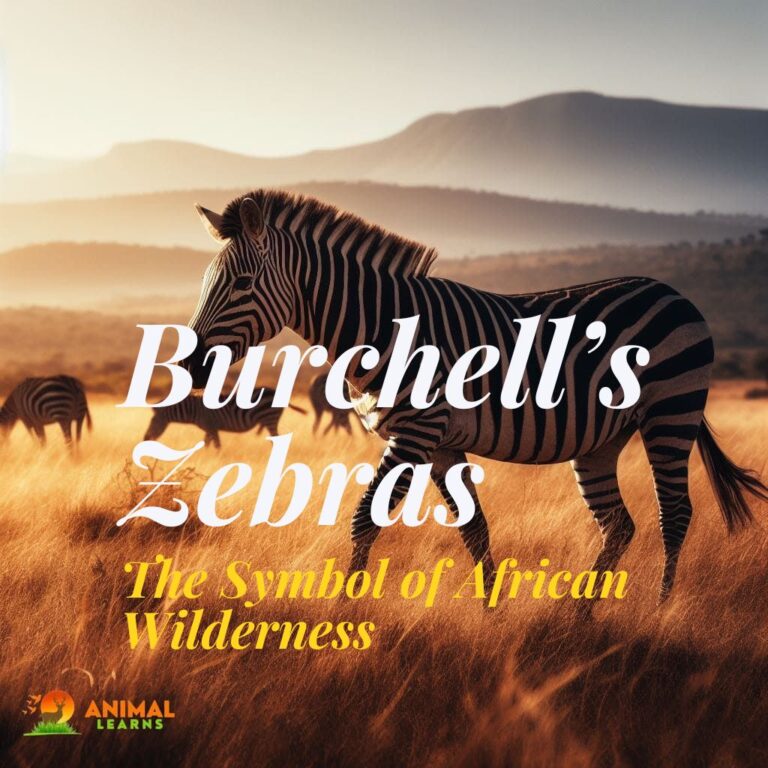30 Amazing Animals That Live In A Lake (With Pictures)

A rich variety of animals that live in a lake can be observed, comprising fish such as walleye, crayfish, and lake trout; mammals like beavers, mink, and otters; birds including ducks, herons, and kingfishers; and invertebrates like clams, mussels, water snails, crayfish, and dragonflies.
Lakes make up a sizable chunk of our world, with water covering over 70% of its surface. They are important ecosystems that support a vast number of organisms and give their occupants a safe sanctuary as well as food supplies.
Are you ready to learn about some fascinating animals that live in a lake?
Animals that Live in a Lake
Contents
- 1 Animals that Live in a Lake
- 2 Lake Animals
- 2.1 Frogs
- 2.2 Turtles
- 2.3 Ducks
- 2.4 Swans
- 2.5 Dragonflies
- 2.6 Waterfowl
- 2.7 Muskrats
- 2.8 Beavers
- 2.9 Otters
- 2.10 Herons
- 2.11 Kingfishers
- 2.12 Coots
- 2.13 Freshwater clams
- 2.14 Loons
- 2.15 Cranes
- 2.16 Carp
- 2.17 Pike
- 2.18 Alligators
- 2.19 Freshwater Crocodiles
- 2.20 Largemouth Bass
- 2.21 Flamingos
- 2.22 Gar
- 2.23 Minks
- 2.24 Egrets
- 2.25 Bluegill
- 2.26 Lake Trout
- 2.27 Moose
- 2.28 Northern Shoveler
- 2.29 Salamanders
- 2.30 West African Manatee
- 3 Diving into Diversity: The Inhabitants of Lakes and Ponds
- 4 FAQs
Lakes provide a plethora of water sports and are excellent locations to escape the heat. But it’s crucial to keep in mind that many other creatures also occupy this area. Around the world, lakes are home to thousands of different species, each of which is unique to its ecosystem.
Many lake animals are cold-blooded, regulating their body temperatures according to the surrounding water, making them uniquely attuned to their ecosystems. Here are some animals commonly found in lakes:
Lake Animals
| Name | Name |
| 1. Frogs | 16. Carp |
| 2. Turtles | 17. Pike |
| 3. Ducks | 18. Alligators |
| 4. Swans | 19. Freshwater Crocodiles |
| 5. Dragonflies | 20. Largemouth Bass |
| 6. Waterfowl | 21. Flamingos |
| 7. Muskrats | 22. Gar |
| 8. Beavers | 23. Minks |
| 9. Otters | 24. Egrets |
| 10. Herons | 25. Bluegill |
| 11. Kingfishers | 26. Lake Trout |
| 12. Coots | 27. Moose |
| 13. Freshwater clams | 28. Northern Shoveler |
| 14. Loons | 29. Salamanders |
| 15. Cranes | 30. West African Manatee |
Frogs
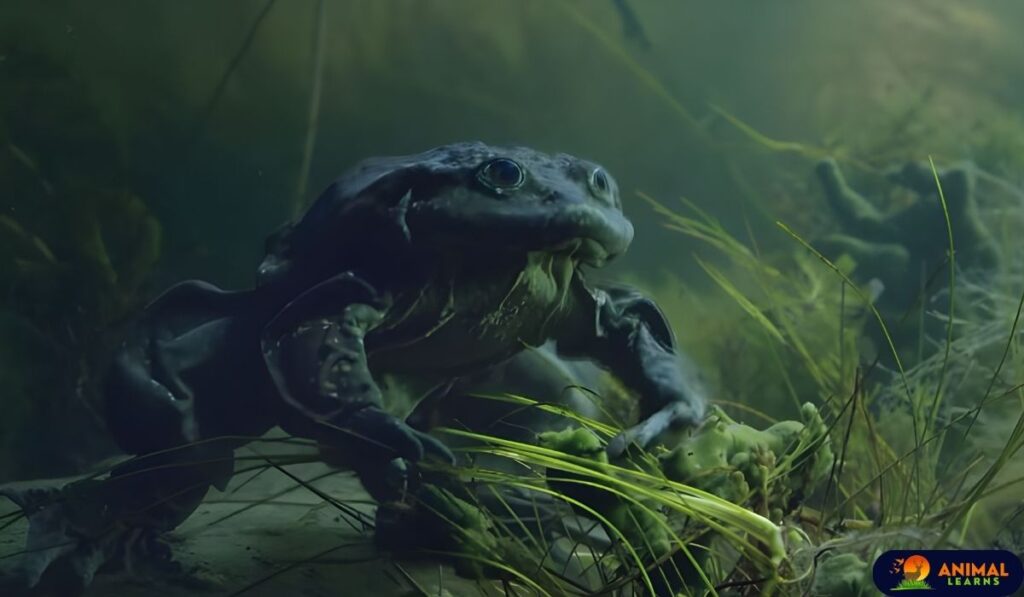
| Attribute | Details |
| Scientific Name | Lithobates catesbeianus (Bullfrog), Hylidae family (Tree Frog) |
| Size | Bullfrog: 3.5 to 6 inches (varies by species) |
| Weight | Bullfrog: 0.5 to 1.5 pounds (varies by species) |
| Location | Bullfrog: North America, Tree Frog: Global (various habitats) |
| Habitat | Bullfrog: Wetlands, ponds; Tree Frog: Trees, shrubs |
| Diet | Insects, small prey (varies by species) |
| Average Lifespan | Bullfrog: 7-10 years, Tree Frog: 2-5 years (varies by species) |
Frogs are aquatic and onshore members of the Amphibian group. Certain frog species face extinction because of pollution and environmental problems.
They have muscular, long legs for jumping and silky, moisturised skin. In water, frogs deposit their eggs, which hatch into tadpoles, which take many months to mature into adult frogs. Tropical jungles and chilly mountain streams are only two of the various locations on Earth where frogs may be found.
Some frogs, like bullfrogs, have loud croaks that can be heard from far away. They are big and strong swimmers. Other frogs, like tree frogs, have sticky toes that help them climb trees and plants near lakes.
Turtles

| Attribute | Description |
| Common Name | Turtles |
| Scientific Name | Varies by species |
| Size | Varies by species, typically 4 to 30 inches |
| Weight | Varies by species, typically 3 ounces to 900 pounds |
| Habitat | Aquatic, semi-aquatic, and terrestrial habitats worldwide |
| Diet | Omnivorous or herbivorous, depending on the species |
| Lifespan | Varies by species, typically 20 to 100+ years |
Reptiles with strong protective shells, or carapaces, are known as turtles. They are widespread across the planet, with the exception of the coldest climates, and they live in a variety of habitats.
Although some species of turtles live on land, many species are found in freshwater environments including rivers, lakes, and ponds. They consume a wide range of meals, such as tiny aquatic creatures, plants, and insects.
Ducks
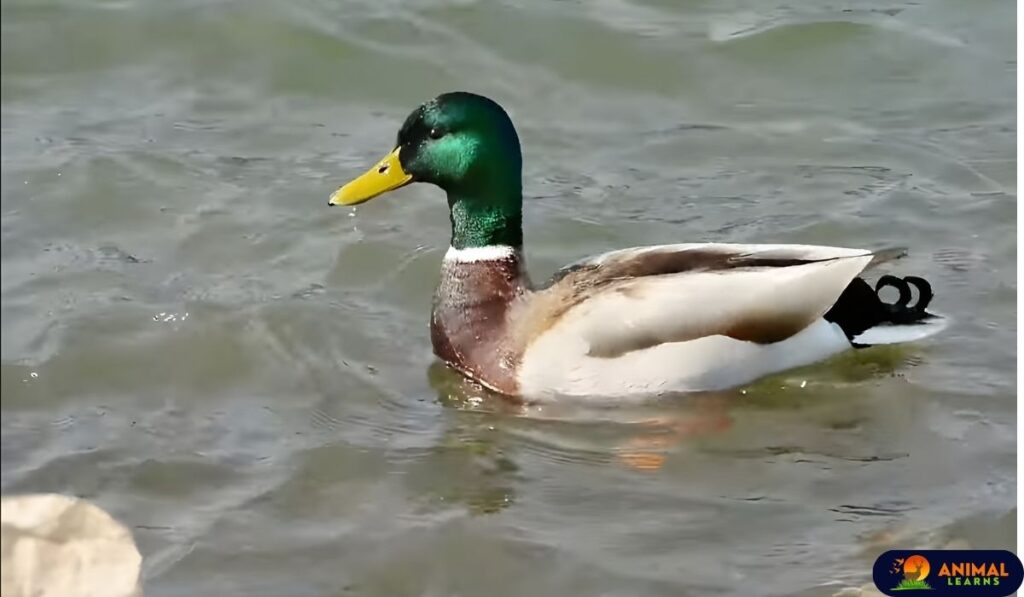
| Attribute | Details |
| Scientific Name | Anas platyrhynchos (Mallard) |
| Size | 20 to 26 inches |
| Weight | 1.6 to 3.5 pounds |
| Habitat | Lakes, rivers, ponds |
| Diet | Aquatic plants, insects |
| Range | North America, Eurasia |
| Lifespan | 5-10 years |
Ducks are found in freshwater and saltwater habitats. Ducks are distinguished by their flat bills, which enable them to filter food from the water, and their webbed feet, which aid in swimming.
Ducks are often gregarious birds that like exploring and traveling in big groups. The mallard, wood duck, and teal are a few of the most popular duck species.
Swans
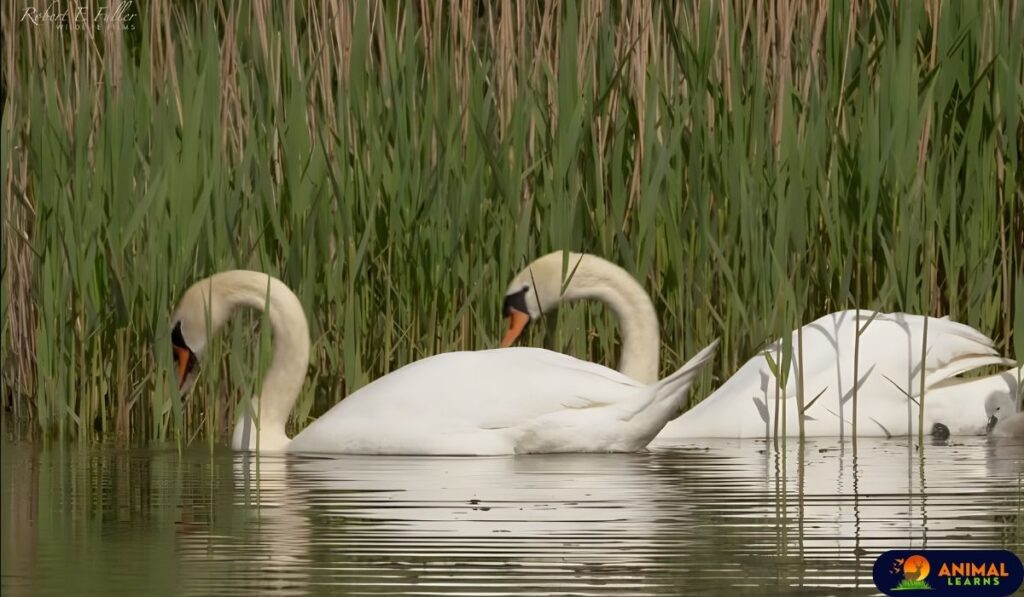
| Attribute | Swans |
| Scientific Name | Cygnus spp. (various species) |
| Size | Varies by species (typically 49 to 67 inches) |
| Weight | Varies by species (typically 17 to 30 pounds) |
| Habitat | Lakes, rivers, ponds, wetlands |
| Diet | Aquatic plants, algae, aquatic invertebrates |
| Location | Eurasia, North America, various regions globally |
| Lifespan | 10 to 20 years (varies by species) |
Large and elegant, swans are distinguished by their long, curving necks and frequently flawless white plumage. They are widespread across temperate parts of the planet and are typically found close to bodies of water like lakes and ponds.
Swans eat a wide range of plant materials and tiny aquatic invertebrates for food, both on land and in the water. They frequently mate for life and are renowned for their monogamous pair connections.
Dragonflies
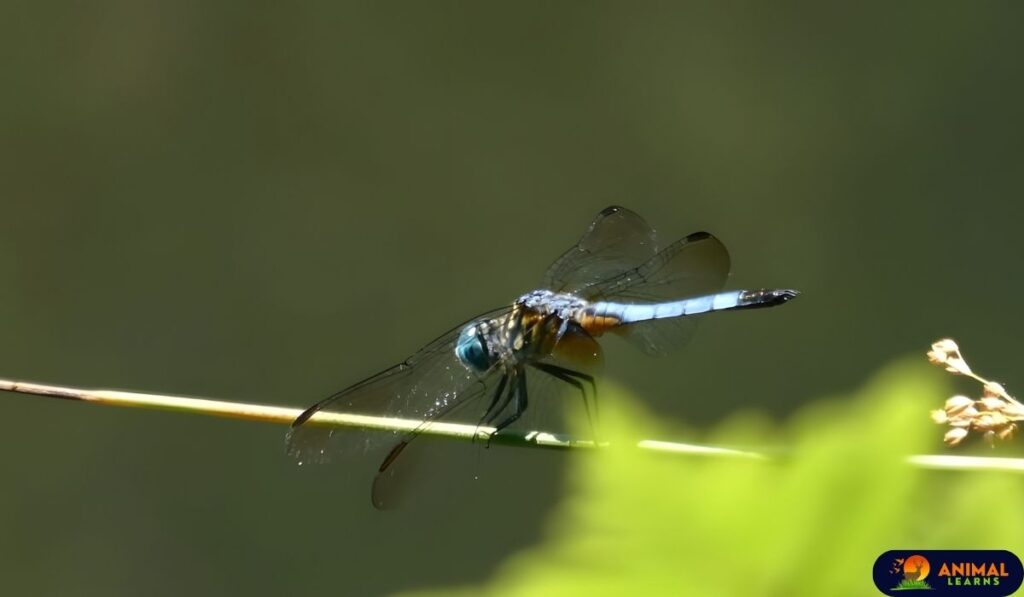
| Attribute | Information |
| Scientific Name | Odonata (order); Various species |
| Size | Varies by species, typically 1 to 4 inches (2.5 to 10 centimeters) in length |
| Weight | Varies by species, typically a few grams |
| Location | Worldwide; Found near freshwater habitats such as ponds, lakes, rivers, and streams |
| Lifespan | Varies by species, typically a few weeks to several months as adults |
| Diet | Carnivorous; Prey on insects, small invertebrates, and sometimes even smaller dragonflies |
Dragonflies are big, predatory insects with elongated bodies, two sets of powerful, translucent wings, and massive, multifaceted eyes. Because their larvae, called nymphs, are aquatic, they are typically found around lakes, ponds, streams, and wetlands.
Being some of the world’s fastest flies, dragonflies are prized for their ability to reduce the populations of dangerous insects. Their sensitivity to pollutants makes them a symbol of environmental health as well.
Waterfowl

| Attribute | Value |
| Scientific Name | Varies by species |
| Size | Varies widely by species, typically ranging from small ducks to large swans and geese |
| Weight | Varies by species, from a few ounces to several pounds |
| Habitat | Aquatic environments including lakes, rivers, ponds, marshes, and coastal areas |
| Diet | Herbivorous, omnivorous, or carnivorous depending on species |
| Geographical Range | Global distribution with various species found on every continent except Antarctica |
Waterfowl are birds that love the water. They have webbed feet that help them swim and dive. Some examples of waterfowl are geese and coots. Geese fly in V-shapes when they migrate and eat plants near the lake. Coots have toes with lobes that help them paddle.
They eat plants and small animals in the water. Waterfowl help keep the plant populations in check and provide food for other animals.
Muskrats

| Characteristic | Information |
| Scientific Name | Ondatra zibethicus |
| Size | 16 to 24 inches (41 to 61 cm) |
| Weight | 2 to 4 pounds (0.9 to 1.8 kg) |
| Location | North America, Eurasia |
| Habitat | Wetlands, marshes, and ponds |
| Diet | Aquatic plants, roots, and small invertebrates |
| Lifespan | 3 to 4 years in the wild |
Muskrats are furry rodent animals that live in a lake, ponds, and wetlands. They have waterproof fur and webbed back feet that help them swim. Muskrats build homes out of mud and plants in the lake. They have babies there and stay warm in the winter.
They eat mostly plants, like cattails and water lilies. Muskrats are important plant eaters in lake ecosystems. They also change the shape and structure of the wetland plants by digging and feeding.
Beavers

| Scientific Name | Castor canadensis |
| Size | 24 to 71 inches (including tail) |
| Weight | 35 to 70 pounds |
| Location | North America, Europe, Asia |
| Habitat | Wetlands, rivers, streams, ponds, lakes |
| Diet | Herbivorous (mostly bark, twigs, leaves) |
| Lifespan | 10 to 15 years in the wild |
In North America, beavers are the most favored aquatic animals. They are well-known for creating dams and having fluffy tails. Beavers are used to scaling trees to avoid predators and are proficient swimmers.
Beavers construct dams to create ponds where they may dwell in safety and rear their young. Beavers are more protected from predators by the obstacles. Beavers nibble on tree branches to form a barrier with their razor-sharp teeth.
Beavers are important creatures for the ecology. They aid in preventing erosion and establishing homes for other creatures. Numerous predators also obtain food from beavers.
Otters
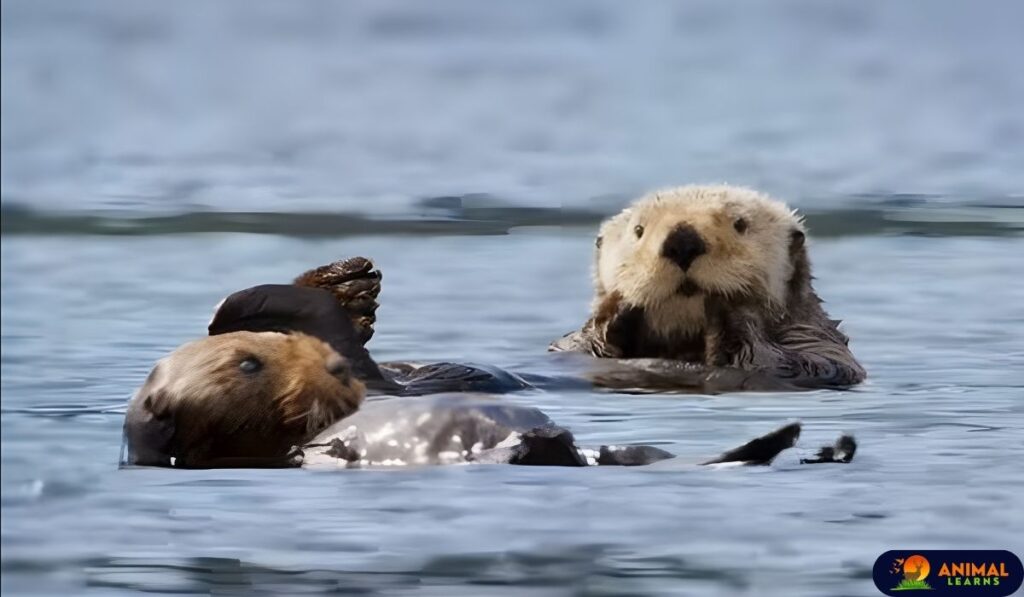
| Attribute | Information |
| Scientific Name | Various species in the family Mustelidae |
| Size | Varies by species, typically 1 to 5 feet in length |
| Weight | Varies by species, typically 2 to 90 pounds |
| Habitat | Freshwater rivers, lakes, coastal areas |
| Diet | Fish, crustaceans, amphibians, and small mammals |
| Location | Found on every continent except Antarctica |
Otters are fascinating animals that live in a lake. Otters are playful mammals that live in lakes, rivers, and coasts. They have sleek bodies and webbed feet that help them swim fast. They are meat eaters, hunting fish, crayfish, and other water creatures. Otters are social animals that live in groups and make noises to communicate.
They also like to slide on mud or snow for fun. Otters are indicators of a healthy lake ecosystem as they need clean water and plenty of food to survive.
Herons

| Attribute | Information |
| Scientific Name | Various species in the family Ardeidae |
| Size | Varies by species (e.g., 18 to 54 inches) |
| Weight | Varies by species (e.g., 0.5 to 8 pounds) |
| Location | Global distribution, varies by species (e.g., wetlands, coastal areas) |
| Habitat | Wetlands, marshes, rivers, lakes, coastal areas |
| Diet | Fish, frogs, insects, small mammals |
| Lifespan | Varies by species (e.g., 15 to 25 years) |
Beautiful, long-legged birds and herons are found around bodies of water all throughout the world. They are skilled hunters, spearing fish, and other tiny game with their large beaks and keen eyesight.
Herons are also renowned for their tasteful nest-building practices; they frequently erect their nests atop cliffs or trees. Although herons are generally peaceful birds, they may turn hostile when defending their nests or young.
Kingfishers
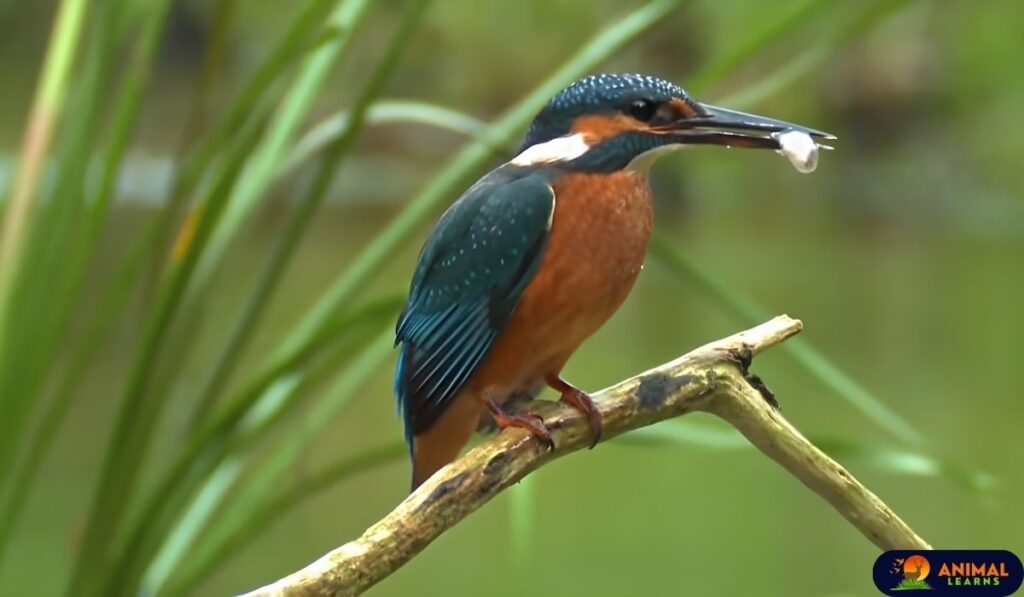
| Category | Information |
| Scientific Name | Alcedinidae (family) |
| Size | Varies by species (4 to 14 inches) |
| Weight | Varies by species (0.5 to 6 ounces) |
| Habitat | Worldwide, near water bodies (rivers, lakes, etc.) |
| Diet | Fish, insects, crustaceans, and amphibians |
| Location | Found on all continents except Antarctica |
| Notable Species | Common Kingfisher, Belted Kingfisher, Pied Kingfisher |
The Alcedinidae family of small to medium-sized birds includes kingfishers. They have huge heads, long, pointed beaks, and vivid coloring.
Kingfishers may be divided into three primary categories: river, water, and tree species. Tree kingfishers, which include kookaburras, are not specialized fish eaters like other river and tree kingfishers, and they are often located distant from bodies of water.
Coots
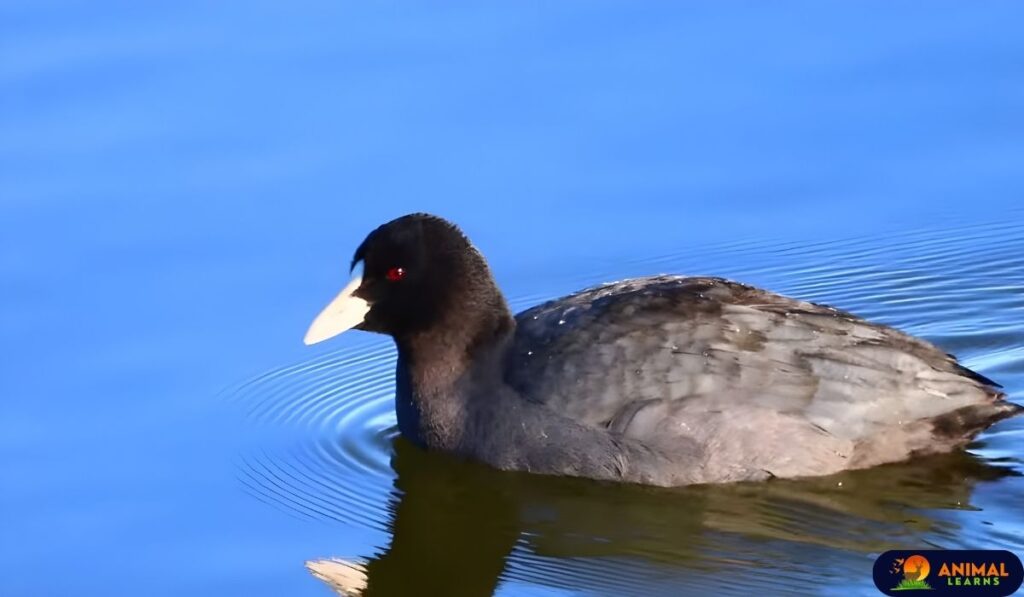
| Attribute | Information |
| Scientific Name | Various species within Ardeidae family |
| Size | Varies by species (typically 18 to 54 inches) |
| Weight | Varies by species (typically 1 to 6 pounds) |
| Habitat | Wetlands, marshes, rivers, lakes, and coastal areas |
| Diet | Fish, amphibians, reptiles, insects, and small mammals |
| Location | Worldwide distribution, depending on species |
| Notable Species | Great Blue Heron, Snowy Egret, Green Heron, etc. |
Coots are aquatic birds belonging to the rail family that have a modest size. Their body color is mostly black or dark gray, but they have a characteristic white frontal shield that sets them apart.
Because of their adaptability, cocks may be found in a range of aquatic habitats, including ponds and lakes. They are not very good flyers, but they can swim and dive well, and they eat mostly tiny fish, aquatic plants, and insects.
Freshwater clams
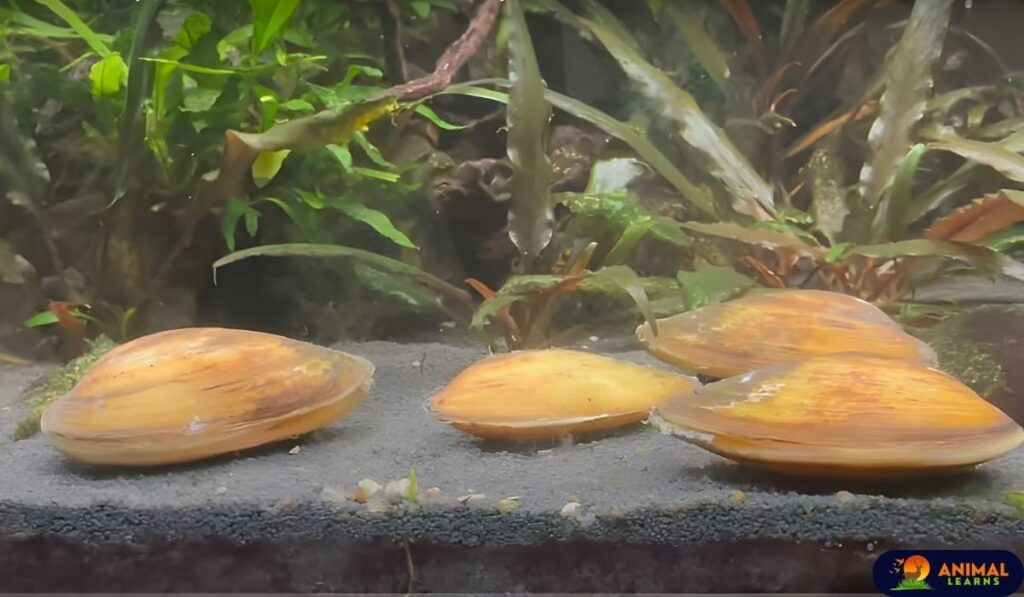
| Attribute | Information |
| Scientific Name | Family Unionidae (various species) |
| Size | Varies by species, typically 2 to 6 inches (5 to 15 cm) |
| Weight | Varies by species, typically 0.5 to 2 pounds (0.2 to 0.9 kg) |
| Location | Freshwater bodies worldwide, including rivers, lakes, and ponds |
| Habitat | Sandy or muddy bottoms of freshwater habitats |
| Diet | Filter feeders, primarily consuming algae and plankton |
| Lifespan | Can live for several decades, with some species living over 100 years |
Freshwater clams are shellfish that live in the sand or mud of lakes. They help keep the water clean by filtering out tiny particles and algae. They have a hard shell that can have different shapes and colors. Freshwater clams are vital for the lake’s ecosystem and health.
Loons
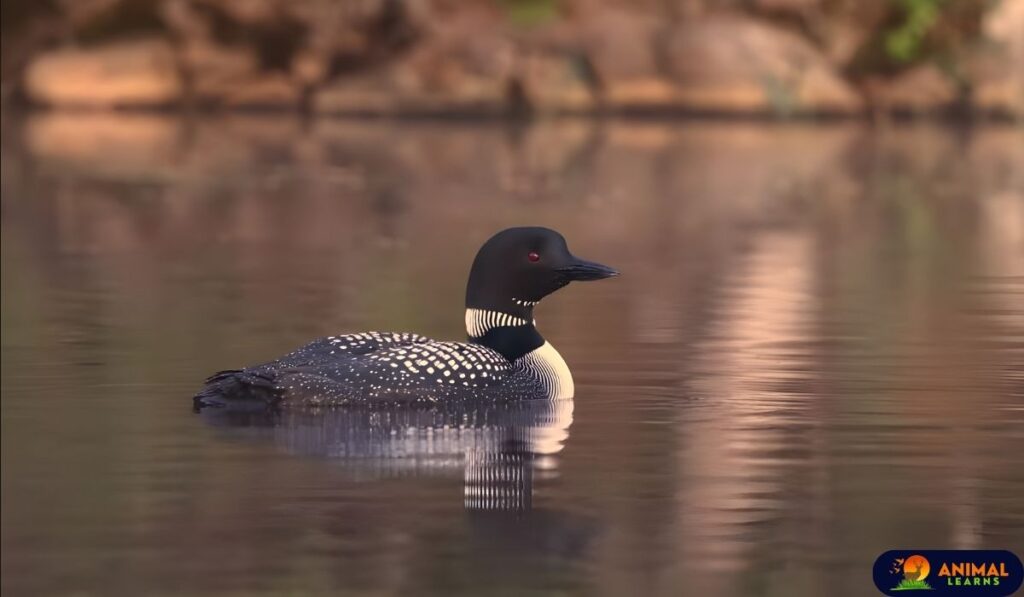
| Attribute | Information |
| Common Name | Loon |
| Scientific Name | Gavia (genus) species vary |
| Size | Approximately 22 to 36 inches |
| Weight | 5 to 12 pounds |
| Habitat | Freshwater lakes and ponds |
| Diet | Fish, aquatic invertebrates |
| Range | North America, Eurasia |
Known as divers in northern Eurasia and many regions of North America, loons belong to the genus Gavia, which is a group of aquatic birds. Their characteristic black-and-white patterns, crimson eyes, and pointed bills define them.
Being skilled divers, loons capture their prey, primarily fish, underwater. Their melodic and eerie calls—particularly at night—are characteristic of northern wilderness regions. Loons migrate, building their nests on freshwater lakes in the north and heading south to coastal seas to spend the winter.
Cranes

| Attribute | Information |
| Scientific Name | Various species (e.g., Grus grus, Grus americana) |
| Size | Varies by species, typically 3 to 5 feet tall |
| Weight | Varies by species, typically 5 to 15 pounds |
| Location | Global distribution, various habitats |
| Diet | Omnivorous, feeding on insects, plants, and small animals |
| Lifespan | Varies by species, typically 20 to 40 years |
Cranes are tall, graceful birds that stand near the shore of lakes. They have long legs and necks and make loud, trumpet-like sounds. Cranes eat different kinds of food, like fish, bugs, and small animals. These birds have beautiful dances that they do to attract mates during the breeding season.
Carp
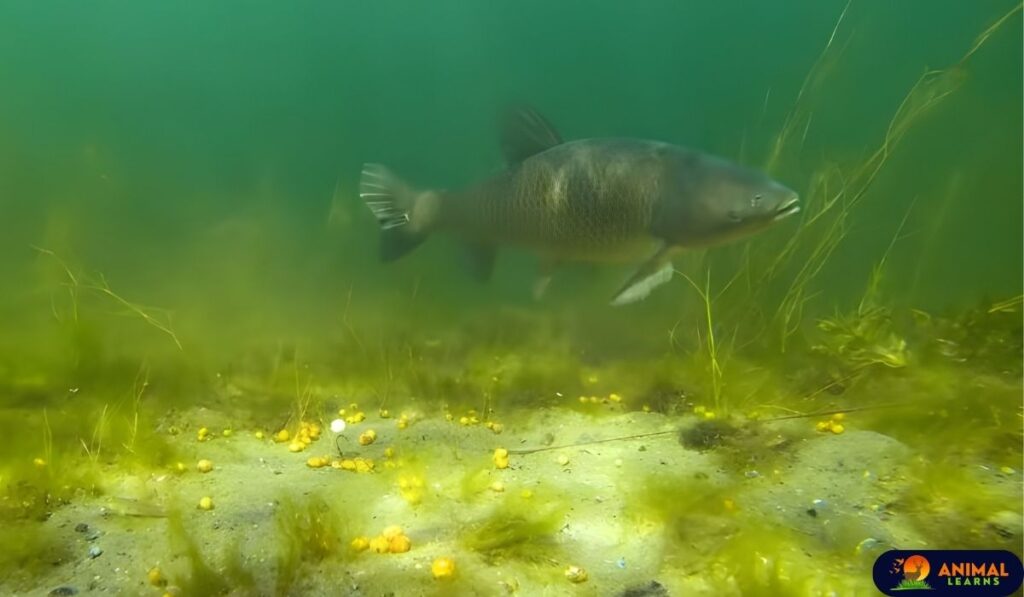
| Attribute | Information |
| Scientific Name | Cyprinus carpio |
| Size | Varies by age, up to 3 feet in length |
| Weight | Varies by age, up to 88 pounds or more |
| Location | Native to Asia, widespread introduction worldwide |
| Diet | Omnivorous, feeding on aquatic plants, insects, and small fish |
| Lifespan | Varies by environmental conditions, typically up to 20-25 years |
Animals that live in a lake, Such as carp, Carp are big, tough fish that live in lakes. They are known for their bottom-feeding habits, digging up dirt as they look for food. Carp can grow very big and are popular with fishermen. However, they can also cause problems in some ecosystems because they breed a lot.
Pike
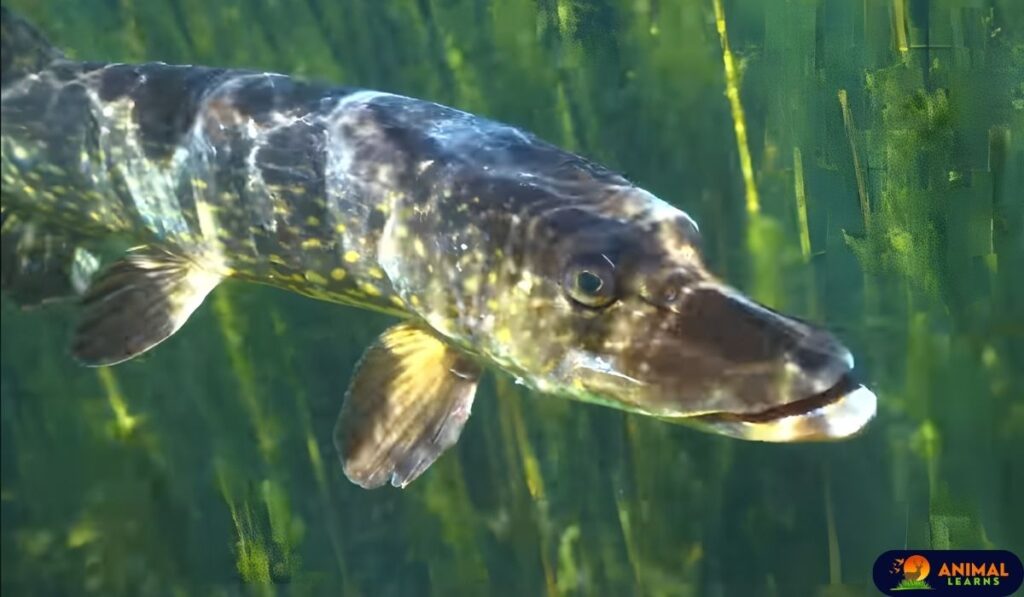
| Attribute | Information |
| Scientific Name | Esox lucius |
| Size | Typically 20 to 30 inches, but can grow over 4 feet |
| Weight | Varies, often between 2 to 30 pounds |
| Location | North America, Europe, Asia |
Pike are fish that hunt other fish. They have long bodies with sharp teeth and are good at hiding in the water. Pike eat meat and catch smaller fish, frogs, and even birds. They are exciting catches for sport fishermen and help keep the balance of fish populations in lakes.
Alligators
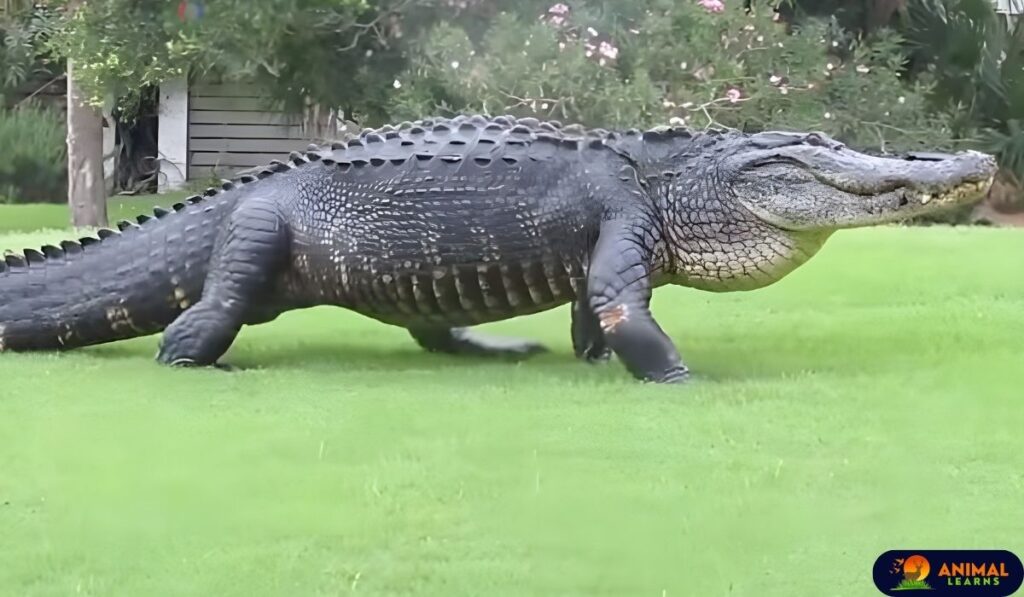
| Attribute | Information |
| Scientific Name | Alligator mississippiensis |
| Size | Adult males: 10 to 15 feet, Adult females: smaller |
| Weight | Adult males: 500 to 1,000 pounds, Adult females: smaller |
| Location | Southeastern United States, China (Chinese alligator) |
The swamps and rivers of the Southeast United States are home to enormous reptiles known as alligators, which are predators that consume fish, birds, and mammals.
They wake up at night and unwind in the sun or at the lake during the day. Alligators are excellent swimmers and can immerse themselves for up to half an hour. They can ascend trees and fences since they are adept climbers.
Because alligators are deadly water creatures, stay away from them and avoid moving around them. The law forbids killing alligators because it protects them.
Freshwater Crocodiles

| Information | Details |
| Scientific Name | Crocodylus johnstoni |
| Size | Up to 3 meters (10 feet) in length |
| Weight | Typically around 100 kilograms (220 pounds) |
| Habitat | Freshwater rivers, lakes, and wetlands |
| Location | Northern Australia |
| Diet | Fish, birds, and small mammals |
| Conservation Status | Least Concern |
There is a group of crocodiles that are smaller and less aggressive than their larger saltwater relatives. They are freshwater crocodiles, and they live in lakes and rivers in parts of Australia and Southeast Asia. Freshwater crocodiles are reptiles that have scaly skin, four legs, and a long tail. They can grow up to 3 meters long, but most of them are much smaller.
They mainly eat fish and smaller aquatic animals, such as frogs, turtles, and snakes. They have a special ability to regulate their body temperature in cooler waters, which makes them well-adapted for life in freshwater habitats.
Largemouth Bass
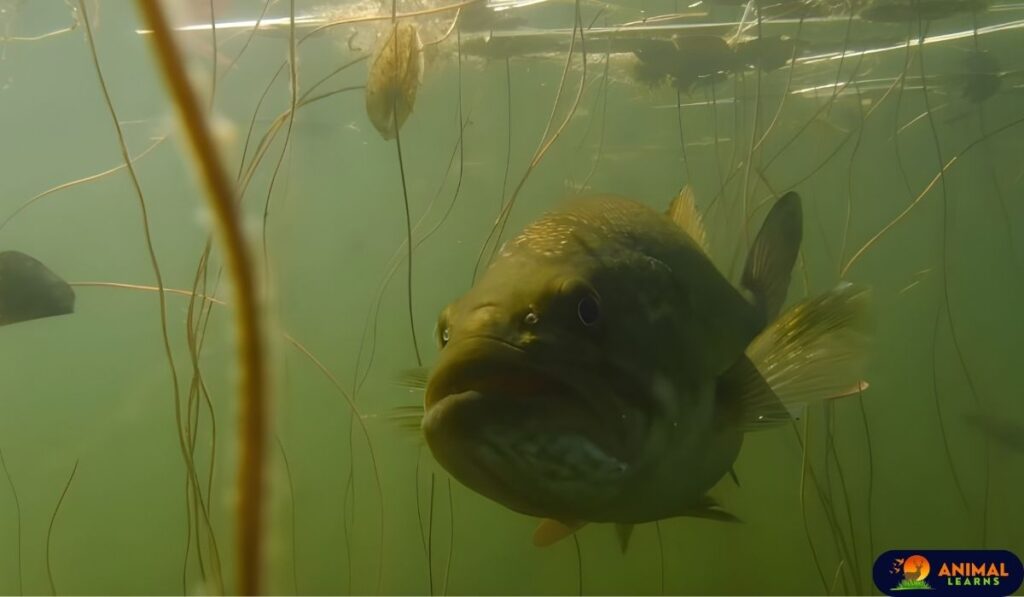
| Attribute | Information |
| Scientific Name | Micropterus salmoides |
| Size | Up to 25 inches |
| Weight | Up to 22 pounds |
| Habitat | Freshwater lakes, rivers, |
| ponds | |
| Location | North America |
| Diet | Fish, insects, smaller |
| aquatic animals |
Animals that live in a lake, Such as Largemouth bass, are fish that have a distinctive large mouth, which they use to swallow their prey whole. They are one of the most popular game fish in North America and are found in lakes across the continent. They can grow up to 75 cm long and weigh up to 10 kg.
They feed on smaller fish, frogs, insects, and anything else that fits in their mouth. Largemouth bass are famous for their challenging and spirited fights when hooked by anglers. They often jump out of the water and try to shake off the lure or bait.
Flamingos

| Attribute | Information |
| Scientific Name | Phoenicopterus sp. |
| Size | Up to 5 feet tall |
| Weight | 4 to 8 pounds |
| Habitat | Coastal mudflats, saline |
| lakes, lagoons, | |
| estuaries | |
| Location | Various continents |
| (Africa, Asia, Americas, | |
| Europe) | |
| Diet | Algae, small crustaceans, |
| aquatic insects |
Flamingos are wading birds that live in and around lakes with salty or alkaline waters in Africa, Asia, the Americas, and Europe. They have striking pink feathers and long, slender legs. They can stand up to 1.5 meters tall and weigh up to 4 kg. Flamingos feed by filtering algae and small animals from the water with their specialized bills.
They often stand on one leg to conserve body heat. Flamingos are social and flamboyant birds that live in large groups called colonies. They perform elaborate courtship displays and communicate with each other through sounds and gestures.
Gar
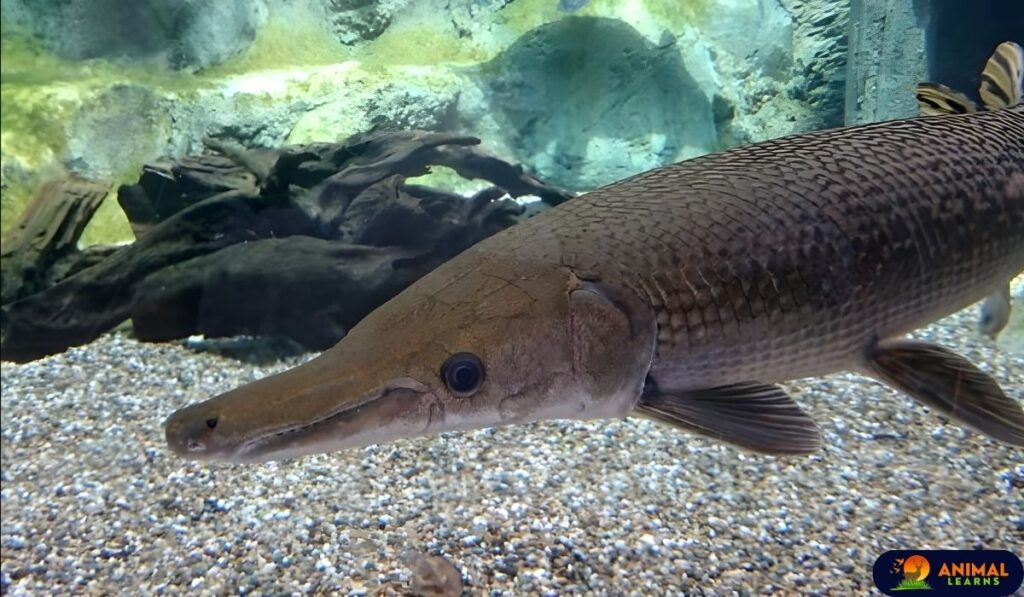
| Attribute | Information |
| Scientific Name | Lepisosteidae family |
| Size | Varies by species |
| Weight | Varies by species |
| Location | North and Central America |
Animals that live in a lake, Such as Gar. They are ancient fish species that live in North and Central America. Gar has elongated bodies and distinctive long jaws filled with sharp teeth. They can grow up to 3 meters long and weigh up to 100 kg. Gar are ambush predators that hide in shallow waters near lake shores, waiting for prey to swim by.
They feed on smaller fish, aquatic birds, and sometimes even small mammals. Gar are tough and resilient fish that can survive in low-oxygen waters and even breathe air.
Minks

| Attribute | Information |
| Scientific Name | Neovison vison |
| Size | 12 to 18 inches (body) |
| Weight | 1.1 to 3.3 pounds |
| Location | North America, Europe |
The Sleek Hunters of Lake Shorelines If you see a furry animal swimming near the shore of a lake or river, it might be a mink. Minks are semi-aquatic mammals that live in North America, Europe, and Asia. They have sleek bodies, and webbed feet, and are skilled swimmers.
They can grow up to 45 cm long and weigh up to 1 kg. Minks are carnivorous and feed on fish, amphibians, small mammals, and sometimes even birds or eggs. They are known for their hunting prowess and territorial behavior.
Egrets
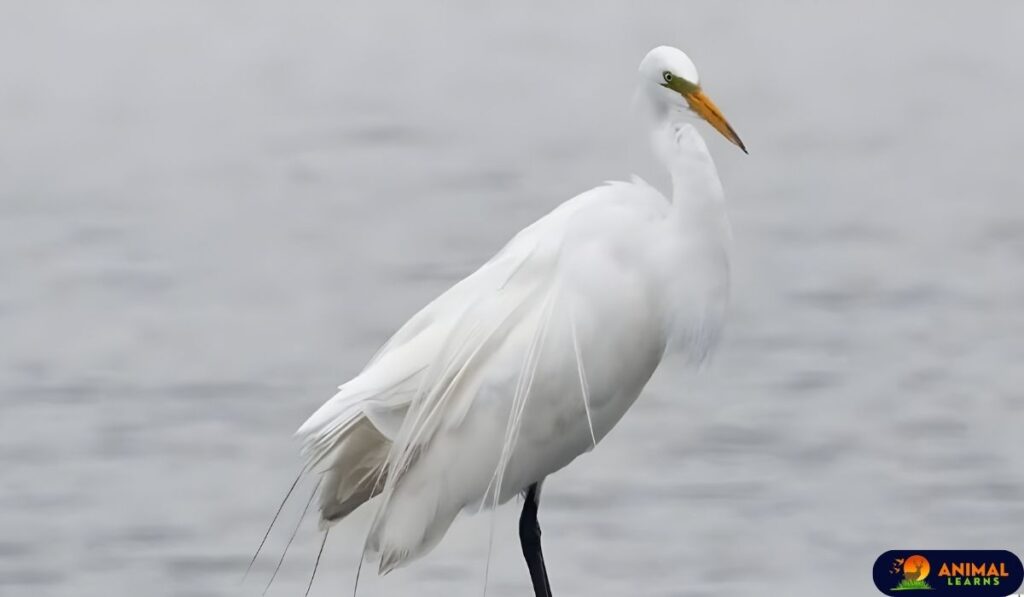
| Information | Details |
| Scientific Name | Egretta (various species) |
| Size | Varies by species |
| Weight | Varies by species |
| Location | Global (various habitats) |
Animals that live in a lake, Such as Egrets are wading birds that live near freshwater or saltwater habitats worldwide. They have long legs and necks and elegant white plumage. They can grow up to 1 meter tall and weigh up to 1 kg.
Egrets are skilled hunters who prey on fish, frogs, aquatic insects, and other small animals. They use their long bills to capture their prey from the water or mud efficiently.
Bluegill
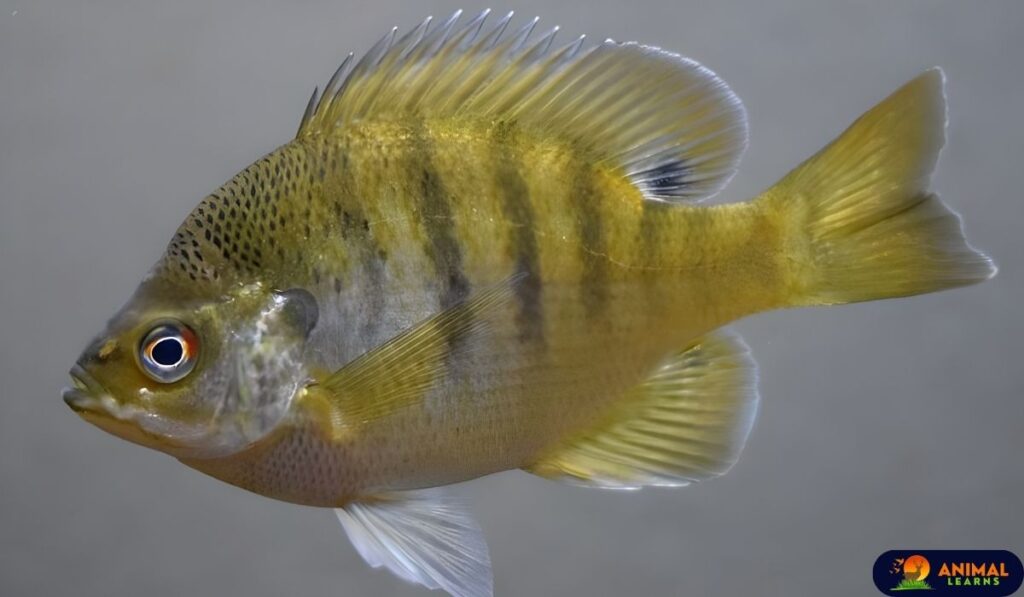
| Information | Details |
| Scientific Name | Lepomis macrochirus |
| Size | 4 to 12 inches (10 to 30 cm) |
| Weight | 0.2 to 2.2 pounds (90 grams to 1 kg) |
| Location | North America (freshwater habitats) |
Bluegill are a type of sunfish that are common in North American lakes. They are small, deep-bodied fish with a blue-green coloration and a distinctive black spot on their gill covers. They can grow up to 40 cm long and weigh up to 2 kg.
Bluegill feeds on aquatic insects, small crustaceans, worms, snails, and sometimes even smaller fish or eggs. Bluegills are popular among anglers, especially beginners, for their willingness to bite on various baits and lures. They are also known for their spunky and aggressive behavior when hooked.
Lake Trout
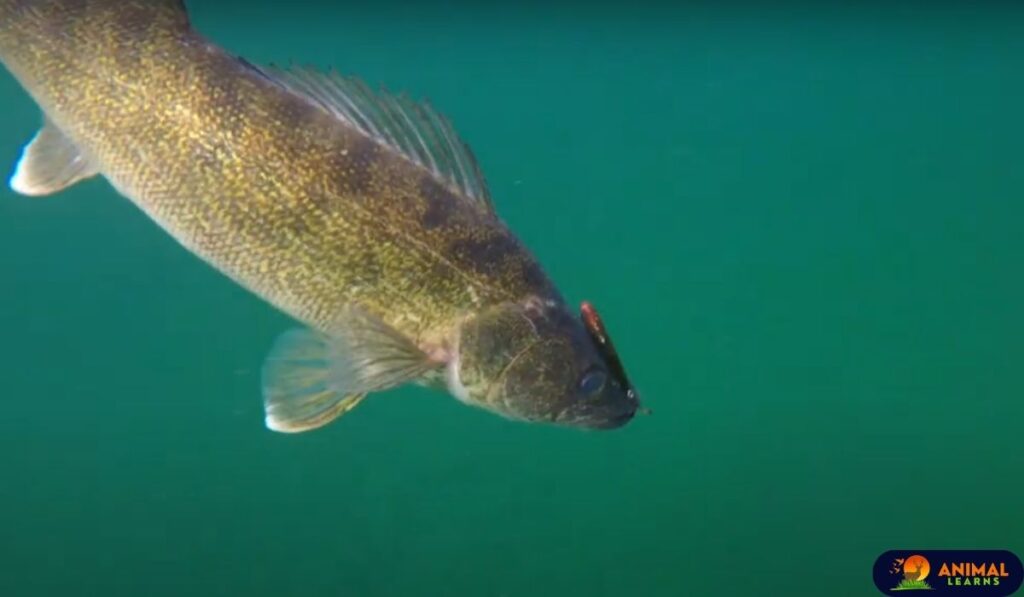
| Attribute | Information |
| Scientific Name | Salvelinus namaycush |
| Size | Up to 40 inches (100 cm) |
| Weight | Up to 40 pounds (18 kg) |
| Location | North America (Freshwater lakes and rivers) |
It’s the lake trout, a fish that can grow to over 30 pounds and live for decades. Lake trout are fish that have a streamlined body, adapted for fast swimming. They have a silvery or brownish color, with light spots on their sides and back.
They prefer cold, clear waters and are often found in the deeper regions of lakes. They are an important species for sport fishing and play a vital role in maintaining the balance of the lake’s ecosystem.
Moose
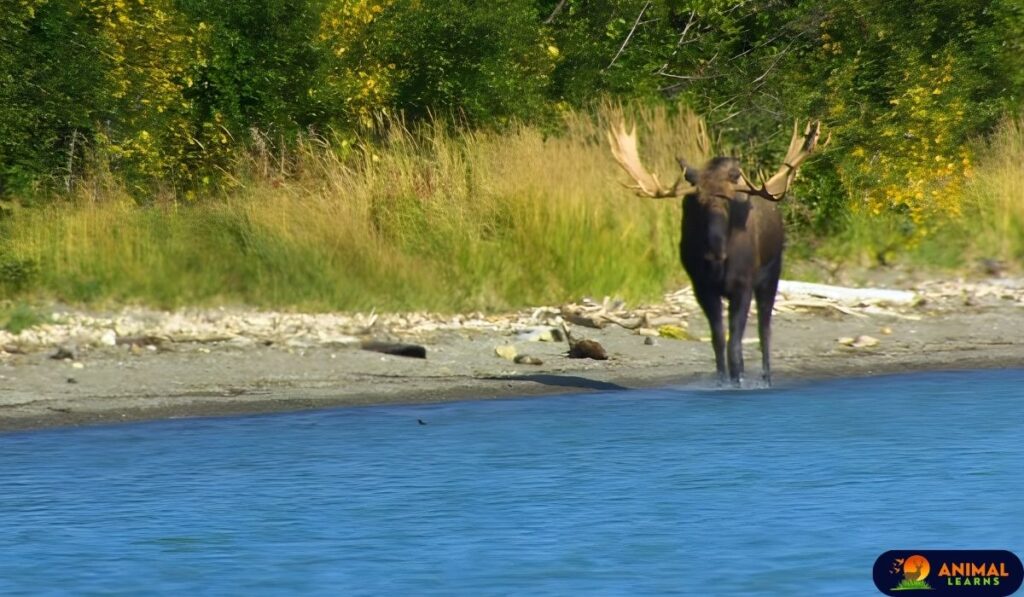
| Attribute | Information |
| Scientific Name | Alces alces |
| Size | Up to 6.9 feet (2.1 meters) at the shoulder |
| Weight | Up to 1,500 pounds (680 kg) |
| Location | North America, Europe, Asia (Forests and Wetlands) |
Animals that live in a lake, Such as Moose, these are iconic large mammals found in North America, Europe, and Asia. They are the largest members of the deer family, with males, known as bulls, weighing up to 1,500 pounds or more.
Moose have a distinctive appearance, including a hump on their shoulders and broad, palmate antlers in males. They have thick fur that ranges from dark brown to black in color.
They are excellent swimmers and often inhabit areas near lakes and wetlands. Moose are herbivores, primarily feeding on aquatic plants, shrubs, and trees, and their presence has a significant impact on the vegetation in their habitat.
Northern Shoveler

| Attribute | Information |
| Scientific Name | Anas clypeata |
| Size | 18 to 22 inches (45 to 56 cm) |
| Weight | 1 to 2 pounds (0.45 to 0.9 kg) |
| Habitat | Wetlands, marshes, and lakes |
| Diet | Aquatic plants, small invertebrates |
| Range | North America, Europe, Asia |
A northern shoveler is a migratory waterfowl species commonly found in wetlands and lakes across North America. Northern shovelers are easily recognizable by their distinctive spatula-shaped bill, which they use for filter-feeding on aquatic invertebrates and plant matter.
They have a striking breeding plumage, characterized by iridescent green heads and bold white stripes on their wings. They also have bright orange legs and feet that contrast with their dark bodies.
Salamanders
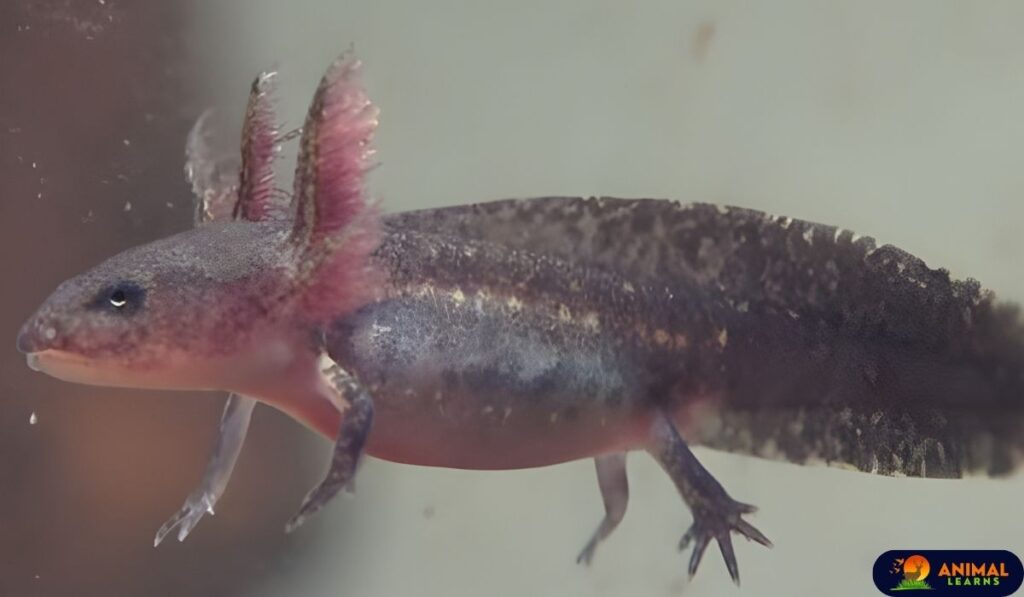
| Attribute | Information |
| Scientific Name | Varies by species |
| Size | Varies by species |
| Weight | Varies by species |
| Habitat | Varies by species (often found near water) |
| Diet | Insects, worms, small invertebrates |
| Range | Worldwide (varies by species) |
It’s a diverse group of amphibians known for their slender bodies, long tails, and moist skin. They have a variety of colors and patterns, ranging from dull brown to bright red or yellow. They are known for their sensitivity to environmental changes and are often considered indicators of water quality.
These amphibians undergo a unique lifecycle that includes an aquatic larval stage and a terrestrial adult stage. They primarily feed on insects, small invertebrates, and sometimes even small fish, contributing to the lake’s food web.
West African Manatee

| Attribute | Information |
| Scientific Name | Trichechus senegalensis |
| Size | 8 to 10 feet (2.5 to 3 meters) |
| Weight | 1,000 to 1,300 pounds (450 to 590 kilograms) |
| Location | West African coastal waters, rivers, and estuaries |
| Habitat | Freshwater and marine habitats |
| Conservation Status | Vulnerable (IUCN Red List) |
It’s a large aquatic mammal found in freshwater lakes and rivers in West Africa. Animals that live in a lake, such as West African manatees have a rounded body, paddle-like flippers, and a flattened tail, which helps them navigate the water efficiently.
They have gray or brown skin that is sparsely covered with hair. They can grow up to 4 meters long and weigh up to 500 kg. West African manatees are herbivorous, primarily feeding on aquatic plants and vegetation.
Diving into Diversity: The Inhabitants of Lakes and Ponds
In lakes and rivers, as well as lakes and ponds, the sheer variety of life forms is astounding. These aquatic habitats are bustling communities where each species plays a specific role in maintaining the delicate balance of the ecosystem. While some lakes are home to just a handful of species, others may harbor a multitude, and the question of “How Many Animals Live in a Lake?” can have varying answers.
In the serene depths of these freshwater bodies, one might be surprised to find some of the most dangerous animals that live in a lake, challenging our perception of lakes as tranquil environments. Curiously, we might wonder why land animals cannot live in water, prompting an exploration of the unique adaptations that distinguish aquatic life from terrestrial existence.
As we embark on this journey through lake ecosystems, we uncover the mysteries of lake life and ponder the significance of preserving these habitats in the wild.
FAQs
What types of animals live in a lake?
Lakes are home to a diverse range of animals, including fish, amphibians, reptiles, insects, and various aquatic birds.
Are there any amphibians that live in lakes?
Yes, many amphibians, such as frogs and salamanders, inhabit lake ecosystems, often spending part of their lives in the water.
What are some common fish species found in lakes?
Common fish species in lakes include bass, trout, catfish, perch, and carp, among others.
How do animals adapt to the lake environment for survival?
Animals in lake ecosystems adapt by developing specialized traits, like gills for breathing underwater, webbed feet for swimming, or camouflage to hide from predators.
Do lakes support migratory animals?
Yes, many lakes are vital stopover points for migratory birds, such as waterfowl, on their annual journeys. Additionally, some fish species migrate within lakes for spawning purposes.


